- Home
- Paul Doherty
Isabella and the Strange Death of Edward II Page 6
Isabella and the Strange Death of Edward II Read online
Page 6
The scandal began with the purses. Isabella was intrigued and informed her father. Her household expenses mention ten torch-bearers who took her by night to Philip’s quarters in the royal palace to consult with the King.65 Philip ordered the matter to be carefully investigated and the three knights were watched and followed. In fact, they were regularly meeting all three of Philip’s daughters-in-law at a palace, the Tour de Nesle, on the outskirts of Paris. There they would feast and dine, turning these nights into one long orgy. Philip was aghast. A secret court was convened. The three women confessed to their adultery and were sentenced to life imprisonment, being virtually walled up in different establishments throughout France. The three knights faced a more barbaric fate. One of them fled to England but was swiftly extradited and joined his two friends at Montfaucon, the bloody execution yard in Paris, where they were strapped to huge wheels which were spun while their limbs were shattered with iron bars.66
The Templars had their vengeance. A year earlier Philip had portrayed himself as master of Europe. Now his three sons were publicly proclaimed as cuckolds and their lives ruined. There is considerable evidence that the scandal soured relations between England and France, while Isabella was viewed as a persona non grata by the French court.
On her return to England, however, Isabella had to face a greater crisis. Edward II had left for the north, intent once more on crushing the Scots. An uneasy peace had been negotiated between Edward and his barons, with the exception of Thomas of Lancaster, and plans drawn up for an all-out invasion of Scotland. Many English lords, who owned estates there, buried their differences to face the common enemy. Writs were issued, troops raised and the English army crossed the border, threatening bloody retribution. The campaign ended in the greatest military disaster England ever suffered in Scotland. On 24 June 1314, Bruce and his army met the English invaders at Bannockburn and inflicted a devastating defeat. The Earl of Gloucester was killed, thousands perished in the battle and many were taken prisoner. Edward himself, although he fought bravely, had to be dragged from the battlefield, losing his own seals as well as his honour. Isabella was waiting for him at Berwick where she did what she could for both her husband and other casualties. She attended to her husband’s wounds, even cleaning his armour; she also loaned him the use of her own seals to authorize documents, then accompanied him south to attend Parliaments held at York and Westminster.67
Isabella continued to do her best to support her husband during the traumatic period following Bannock-burn. Thomas, Earl of Lancaster, who had sulked in his tent like Achilles during the Scottish campaign, now emerged as an alternative ruler in England and seized the reins of power. Isabella, like Edward, was subjected to Lancaster’s strictures and dislike and grants to her dried up. The Earl again attacked the Beaumont family, who were driven from her household. Isabella did not retaliate but over the next two years, 1314–16, stayed with her husband until her lying-in for the birth of her second son John, who was born at Eltham on 15 August 1316 and baptized some five days later.68 Edward was ecstatic, and his delight was expressed in generous grants of land to Isabella, including the county of Cornwall and treasure from his Lombard bankers, the Bardi.69
Apart from this, 1316 was to be the ‘Annus Horribilis’ of Edward’s reign. Not only was he fighting a losing battle against the Scots but was now forced to begin humiliating negotiations with the hated Lancaster. It was also the year of the Pretender. A young Oxford clerk came forward to claim that he, not Edward II, was the real King of England. The Pretender, with his cat, was taken before the Justices in Oxford and told the most fantastic story. He pointed out that he was missing an ear, the principal proof for his claim to kingship. He then informed the astounded Justices how, many years earlier, he had been playing in the courtyard of the royal castle when he had been attacked by a sow. The animal had bitten off his ear and the nurse, terrified of the old King’s rage, had exchanged the royal child for the son of a peasant. That, the Pretender triumphantly concluded, was why he was making his claim and why the present King was more interested in rural pursuits and hobbies than good governance. The case caused great scandal and not a little merriment. Isabella was very upset by the story and eventually the comedy began to wear thin. The Pretender was closely interrogated, broke down and confessed that he had been walking in Christchurch Meadows in Oxford when the devil had appeared to him in the form of a cat, which he produced in court as evidence. The devil had instructed him to go in front of the royal Justices, tell his story and all would be well. The judges listened attentively then, tired of the situation, had the Pretender hanged on the town gallows with the cat suffering the same fate alongside him.70
The story illustrates Edward’s lack of popular support and a growing realization of his failure to act like a king. Isabella decided the continuous decline of her husband’s fortunes had to be stopped. Robert the Bruce was an opponent they could do little about. During 1316–17 England was ravaged by a great famine and Edward lacked the men, resources and will to defend the Scottish March. Lancaster was a different matter and Isabella gleefully opposed him at every opportunity. When the powerful bishopric of Durham became vacant in 1316, on the death of Anthony Bec, Isabella successfully backed the candidature of Lancaster’s enemy, Louis de Beaumont, brother of Henry and Isabella’s close friend, Isabella de Vescy. Isabella promised her husband that Louis would ‘be a stone wall’ against the Scots and a powerful ally in the north. She had her way and Lancaster was frustrated.71 Isabella had now acquired the same privileges that Gaveston had enjoyed: she attended council meetings, patronized court knights and, when Dowager Queen Margaret died in 1318, was rewarded with a generous portion of her landed inheritance.72 On 18 June 1318 Isabella gave birth to their third child, a girl, Eleanor, and Edward was present with her at Woodstock for the lying-in and birth.73
By 1319 Isabella’s pre-eminence had also attracted the attention of Robert the Bruce. Scottish forces had driven the English out of Scotland and were busy ravaging the northern shires. Edward and Lancaster decided to bury their differences and concentrate on trying to recapture the powerful northern fortress of Berwick, which dominated vital routes into Scotland. During the summer campaign of 1319, Isabella remained at a manor near York. She thought she was safe, but in fact she was now the real object of Scottish military strategy. James Douglas, Bruce’s war leader and a skilful guerrilla chief, had decided to capture her. This would not only humiliate Edward throughout Europe but be a powerful negotiating counter in forcing both England and France to recognize Scottish sovereignty. Douglas gathered a highly mobile force, outflanked the English army gathering around Berwick and, at the beginning of August 1319, penetrated deep into Yorkshire. He was nearly successful but the Queen was alerted and fled to the security of Nottingham Castle. Douglas had to content himself with harrying the countryside and defeating a hastily assembled English force at Mytton on 12 September 1319. Douglas would have continued his audacious foray south but England’s northern levies now rallied. They threatened to block his route back to Scotland so Douglas had no alternative but to retreat.
Douglas’s campaign to seize Isabella illustrates how the Scots, like Lancaster, had realized the Queen’s standing with Edward II: she was the mother of his three healthy children, a Queen who loyally supported him and had done good work for the Crown in its tangled negotiations with France. Her capture would have been a national disaster and a personal humiliation for Edward. More importantly, and rather ironically, Isabella would have, once again, been used as a powerful counter in diplomacy. Kings and princes of the fourteenth century were accustomed to using royal captives to negotiate favourable terms – Philip IV of France himself had seized the Count of Flanders’s daughter. Later in the century, Isabella’s war-like heir would use the imprisoned kings of both France and Scotland to gain favourable terms, especially rich ransoms and concessions of territory. If successful, Bruce would have done the same: demanding heavy compensation for the ravages by English for
ces and Edward’s approval of territorial concessions, even Scottish sovereignty itself.
Accordingly, Douglas’s raid to seize the Queen must have been carefully planned. The Scottish war leader must have gained vital information about the movement of English forces along the north-east coast and, more importantly, that the English Queen was not protected behind the fortifications of York but residing in a ‘parva villa iuxta’ – ‘a small manor house nearby’.74 Treachery was suspected and Lancaster was accused. The real villain of the piece was most probably a Yorkshire knight, Edmund Darel. Darel was a member of the King’s household and closely involved in royal decisions: as a northerner he was also known to the Scots. Moreover, although he had been pardoned with the rest, Darel was under suspicion of being a turn-coat, of having a hand in Gaveston’s capture and death in 1312. Darel was an argumentative, war-like man, involved in brawls with his neighbours, quick to pick up the sword and often tried to achieve his ends by force. Like many northern knights, he had been impoverished by the Scottish raids and susceptible to the large bribes the Scots offered to facilitate Douglas’s raid to capture the Queen.75
Darel was arrested for betraying the Queen but the prosecution had little evidence. Nevertheless, he lost his place in the King’s household and was summarily deprived of the royal manor of Westcliff in Yorkshire. Due to the courage of the Archbishop of York and the fighting qualities of the northern levies, Isabella escaped this attack on her freedom and honour but it was an incident remembered by others. Edward was both horrified and embarrassed by his Queen’s plight and gave Isabella jewels and other presents as some consolation for the indignities she had suffered.76
Isabella returned to London with Edward in January 1320 and stayed with him for most of that year. She then accompanied him to France to meet her brother Charles IV. The meeting with the new French King had two agendas. Ostensibly, they went to discuss the usual problem of English possessions in France. Secretly, Edward was now determined to crush the baronial opposition and, once again, was looking for French assistance.
In the eight years since Gaveston had died Edward had had the support of old colleagues like Walter Reynolds, Arcbhishop of Canterbury, a number of earls and, of course, royal officials and clerks, and had worked hard to build up a court party loyal to him. However, he not only wanted revenge for Gaveston but needed to fill the emotional void created by the death of his favourite. Before long a new star emerged from the court party: a more sinister figure than Gaveston, the astute and rapacious Hugh de Spencer. De Spencer’s father, also called Hugh, had been an administrator, a King’s man in every sense of the word. He was the King’s constant companion and won Edward’s undying loyalty by being one of the few courtiers who had supported Gaveston. In doing so, however, he had incurred the implacable wrath of Lancaster and his clique. Naturally, the King rewarded him but it was de Spencer’s son, Hugh the Younger, who emerged as Edward’s personal favourite.
Hugh de Spencer the Younger was of similar age to Edward, and had been knighted on the same day. Although he had opposed Gaveston, Hugh eventually followed his father’s line, deserting the barons and becoming chamberlain to the royal household. He was quick to criticize Lancaster and, in the period 1318 to 1321, drew closer to the King. Edward, delighted by this, supported the de Spencers’ ambitions in South Wales where they were busy carving out a small empire for themselves. The Earl of Gloucester had died at Bannockburn in 1314 without a male heir, and his vast territories in South Wales and along the Welsh March fuelled a power struggle amongst the other great landowners in that region: de Spencer was one and his implacable opponents Roger Mortimer of Chirk and his war-like nephew, Mortimer of Wigmore. De Spencer’s territorial ambitions, not to mention his undoubted talents, also brought him into conflict with many of Lancaster’s party who owned lands in Wales. He won royal support in the principality whilst his power was also felt at court, where he emerged as Edward’s closest councillor and confidant. While de Spencer used the King to further his own ambitions, Edward saw de Spencer as the means to destroy his enemies and avenge himself for the death of Gaveston.
De Spencer the Younger, however, was not a second Gaveston. Hugh was a war lord, a politician and administrator. He understood the machinations of Edward’s baronial opponents and was not frightened of championing the King’s cause against all comers. Isabella may have liked the father – the old de Spencer had been present at the baptism of her first child – but his son was quickly viewed as a rival. In 1321 Isabella was twenty-three years old, the King’s favourite and the mother of his three children. She did not take kindly to her husband’s attentions being distracted elsewhere. De Spencer’s rise was piecemeal but Isabella was at loggerheads with him from the start.
In 1320 the first signs of a rift between the Queen and the new favourite became apparent. De Spencer the Elder was supposed to pay her £100 per year from the profits of his manor at Lechlade, but failed to do so. The following year his son followed suit over £200 due from the profits of Bristol. They refused to pay the debts or to enter into any negotiations over these debts.77 Isabella retaliated and the court became involved in a petty feud between the Abbot of St Albans and William Somerton, Prior of the Abbey Cell at Binham in Norfolk. The Abbot appealed to de Spencer for help. He despatched some of his henchmen to arrest Somerton and hand him over to the Abbot who threw him into gaol. De Spencer’s enemies worked hard to get Somerton released and enlisted the patronage of the Queen. The issue was petty but it masked deeper antagonisms, which were about to surface.78
By August 1321, the barons were alarmed at the de Spencers’ growing influence, both at court and in South Wales. Lancaster and his supporters retaliated by adopting the same tactics used against Gaveston and demanded their exile. Edward refused. The barons gathered their armed men and entered London. Edward was forced to concede, particularly when his Queen went down on her knees to beg for the expulsion of the favourites in order to avoid civil war, an empty political gesture by Isabella which allowed Edward to gracefully concede defeat.79 The eldest de Spencer went into hiding: the younger de Spencer travelled to the southern ports, hired men and ships, and assumed the life of a pirate in the English Channel: he was successful enough to capture a Genoese galley worth some £1000.
Edward, meanwhile, now finally emerged from the depression caused by Gaveston’s death. He had lost one favourite, he was determined not to lose another. Isabella had opposed de Spencer over the Somerton case and pleaded for their exile, but she was still the King’s favourite, the recipient of his generosity: moreover, she was pregnant with their fourth child, a daughter Johanna, who was born at the Tower in July 1321.80 Isabella disliked de Spencer but she also had no love for Lancaster and his coterie, and so co-operated with her husband’s secret schemes to bring the favourites back to court.
De Spencer had been exiled in August 1321. By October Edward had decided to fight back and the hand of the astute, scheming Hugh de Spencer can be seen in Edward’s changed approach. This time Edward did not go wandering the lonely northern shires but stayed near London, plotting not only de Spencer’s return but the destruction of his enemies. In the previous summer both the Tower of London and the custody of the Great Seal, the King’s official signature to all charters and letters, had been entrusted to Isabella,81 who was now also drawn deeply into Edward’s plot to remove baronial opposition around London. The King selected his chosen victim prudently. One of Lancaster’s more reluctant lieutenants was Bartholomew Badlesmere, a great Kentish landowner. The county of Kent was of strategic importance: whoever controlled it would also control the entire south bank of the Thames, the coastline of south-east England, including its valuable ports stretching from the Medway to Romney, the perfect sanctuary for de Spencer playing pirate out in the narrow seas.
In September 1321, Edward despatched a number of knights to seize Dover Castle, thus gaining control over the most important southern port in England. If Hugh de Spencer the Younger was to return, Dove
r would provide a natural door into the kingdom. Badlesmere retaliated by placing all his castles in Kent on a war footing and moving through the county, banners displayed, in a show of strength, to Canterbury.82 Edward watched and waited. He and Isabella travelled to Thanet Island secretly to meet de Spencer, who had brought in his pirate fleet. The finer details of their plan were finalized. Edward was determined to seize Leeds Castle, Badlesmere’s principal stronghold, where he had placed both his treasure and his wife.83 The court gathered at Whitley in Surrey with the kingdom on the brink of civil war.
THREE
The New Favourite and Isabella’s Disgrace
‘To the Queen. The King has frequently ordered her, both before and after the homage, to come to him with all speed, laying aside all excuses . . .’
Edward II to Isabella, Calendar of Close Rolls, 1323–1327
‘I have not forgotten the great wrong that was done to my brother Piers.’ Edward’s words, reported by his anonymous biographer,1 lie at the root of the blood bath and terror that occurred after the seizure of Leeds Castle in 1321. It is easy to play the psychologist and read into people’s actions particular theories or explanations. Nevertheless, the chroniclers are unanimous and Edward’s actions confirm their statements: the King had never forgotten, not even for a day, the murder of Gaveston by his baronial opponents. The chroniclers dismiss Edward as a light-weight ruler, more interested in his pleasures and his games than policy, but the events of 1321–6 prove them wrong. Edward had been obsessed, infatuated with Gaveston. He had made mistakes since the favourite’s murder, but he had managed to dissimulate and to hide both his anger and raging desire for revenge. He waited for an opportunity and de Spencer the Younger provided it.

 Book of Shadows
Book of Shadows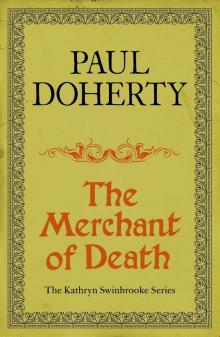 The Merchant of Death
The Merchant of Death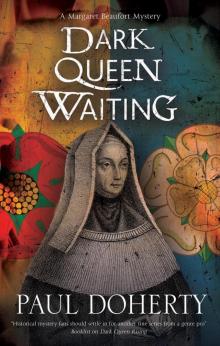 Dark Queen Waiting
Dark Queen Waiting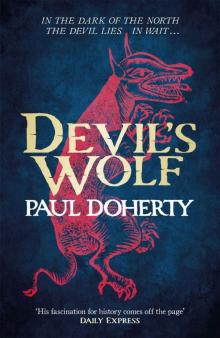 Devil's Wolf
Devil's Wolf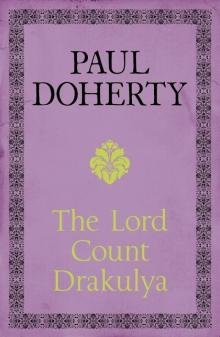 The Lord Count Drakulya
The Lord Count Drakulya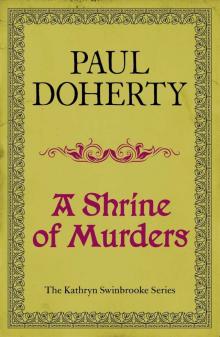 A Shrine of Murders
A Shrine of Murders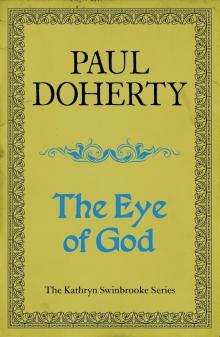 The Eye of God
The Eye of God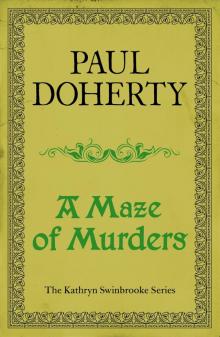 A Maze of Murders
A Maze of Murders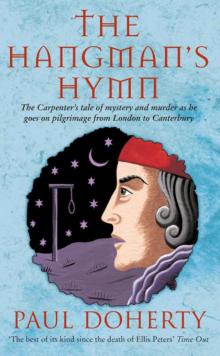 The Hangman's Hymn
The Hangman's Hymn The Godless
The Godless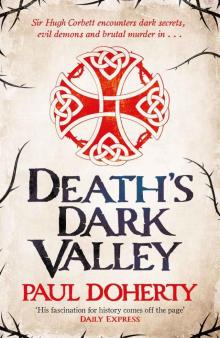 Death's Dark Valley
Death's Dark Valley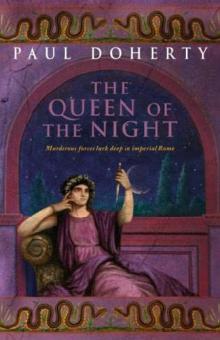 Queen of the Night ar-4
Queen of the Night ar-4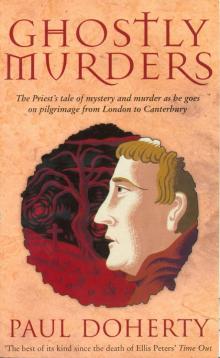 Ghostly Murders
Ghostly Murders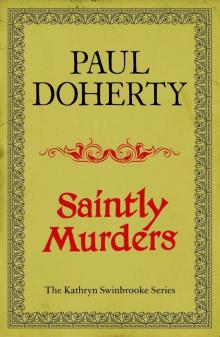 Saintly Murders
Saintly Murders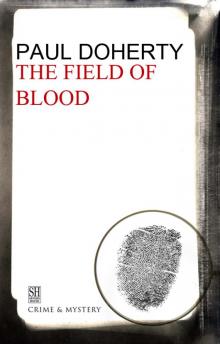 The Field of Blood
The Field of Blood Hugh Corbett 10 - The Devil's Hunt
Hugh Corbett 10 - The Devil's Hunt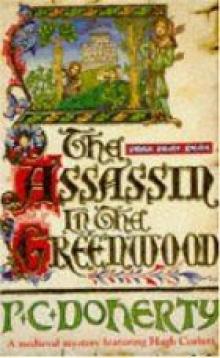 Assassin in the Greenwood hc-7
Assassin in the Greenwood hc-7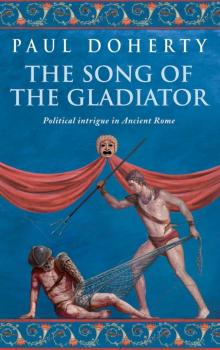 The Song of the Gladiator
The Song of the Gladiator Hugh Corbett 17 - The Mysterium
Hugh Corbett 17 - The Mysterium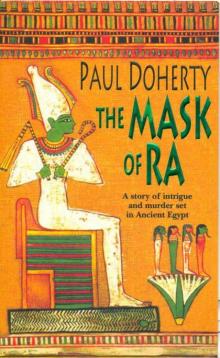 The Mask of Ra
The Mask of Ra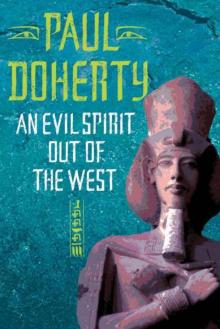 An Evil Spirit Out of the West (Ancient Egyptian Mysteries)
An Evil Spirit Out of the West (Ancient Egyptian Mysteries) Herald of Hell
Herald of Hell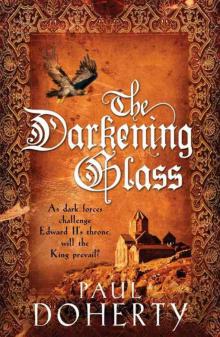 Mathild 03 - The Darkening Glass
Mathild 03 - The Darkening Glass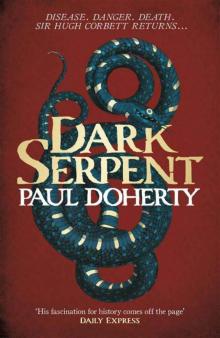 Dark Serpent (Hugh Corbett 18)
Dark Serpent (Hugh Corbett 18)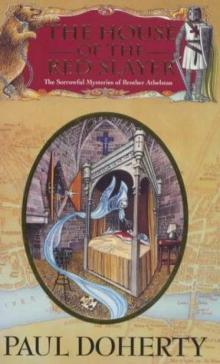 House of the Red Slayer smoba-2
House of the Red Slayer smoba-2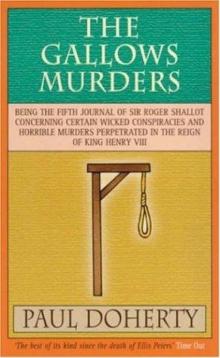 The Gallows Murders
The Gallows Murders The Straw Men
The Straw Men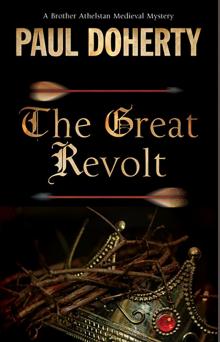 The Great Revolt
The Great Revolt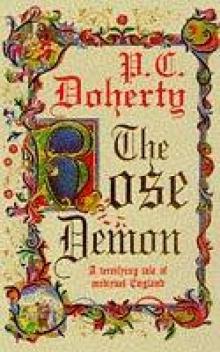 The Rose Demon
The Rose Demon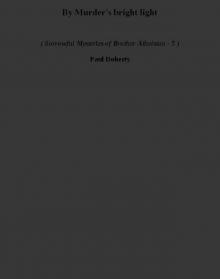 By Murder's bright light smoba-5
By Murder's bright light smoba-5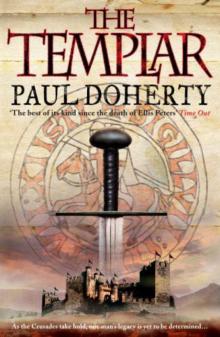 Templar
Templar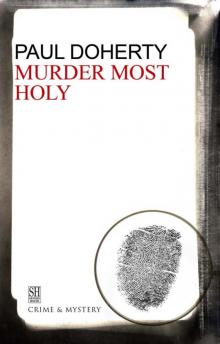 Murder Most Holy
Murder Most Holy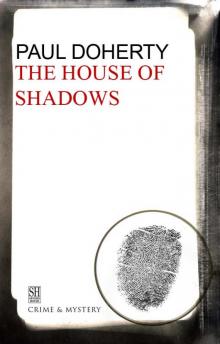 The House of Shadows
The House of Shadows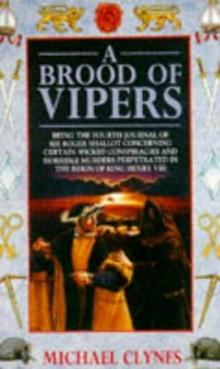 A Brood of Vipers srs-4
A Brood of Vipers srs-4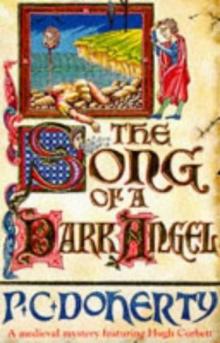 Song of a Dark Angel hc-8
Song of a Dark Angel hc-8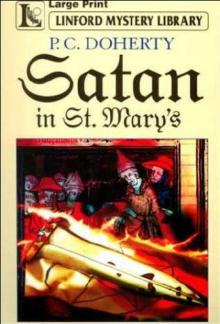 Satan in St Mary hc-1
Satan in St Mary hc-1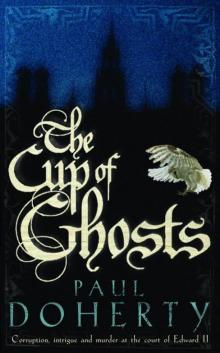 Mathilde 01 - The Cup of Ghosts
Mathilde 01 - The Cup of Ghosts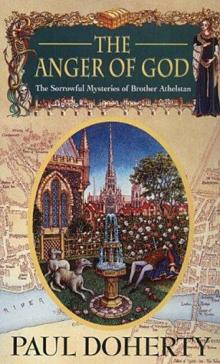 The Anger of God smoba-4
The Anger of God smoba-4 Isabella and the Strange Death of Edward II
Isabella and the Strange Death of Edward II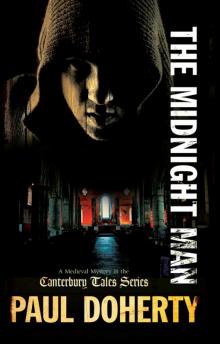 The Midnight Man ctomam-7
The Midnight Man ctomam-7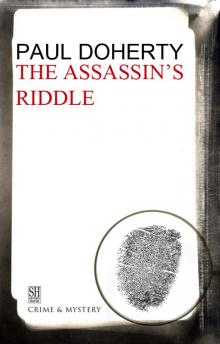 The Assassin's Riddle
The Assassin's Riddle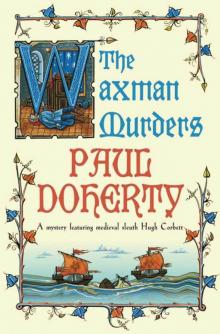 Hugh Corbett 15 - The Waxman Murders
Hugh Corbett 15 - The Waxman Murders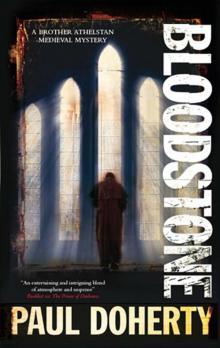 Bloodstone smoba-11
Bloodstone smoba-11 Bloodstone
Bloodstone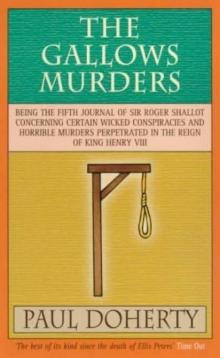 The Gallows Murders srs-5
The Gallows Murders srs-5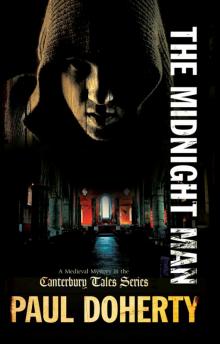 The Midnight Man
The Midnight Man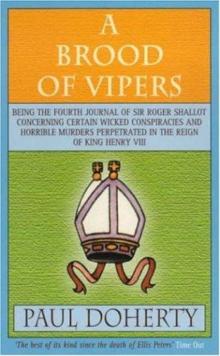 A Brood of Vipers
A Brood of Vipers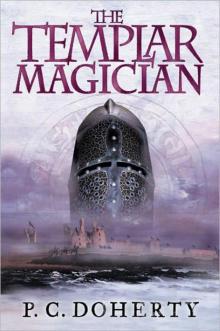 The Templar Magician
The Templar Magician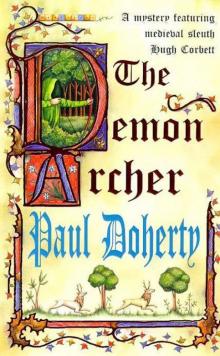 Hugh Corbett 11 - The Demon Archer
Hugh Corbett 11 - The Demon Archer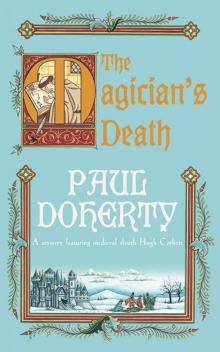 Hugh Corbett 14 - The Magician's Death
Hugh Corbett 14 - The Magician's Death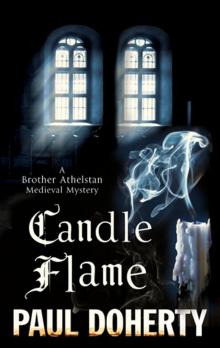 Candle Flame
Candle Flame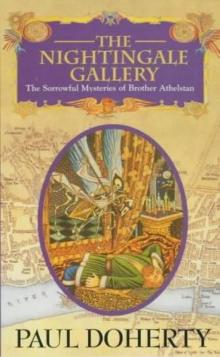 The Nightingale Gallery smoba-1
The Nightingale Gallery smoba-1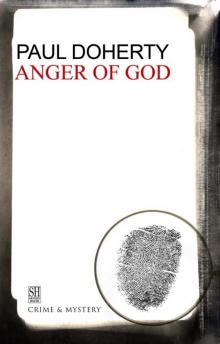 The Anger of God
The Anger of God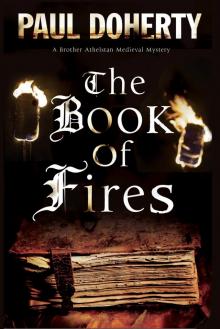 The Book of Fires
The Book of Fires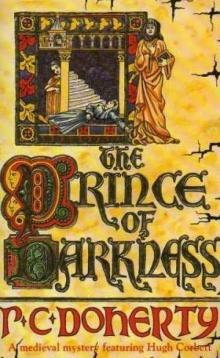 Prince of Darkness hc-5
Prince of Darkness hc-5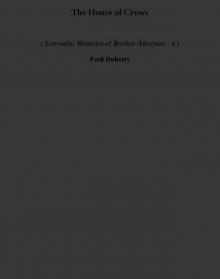 The House of Crows smoba-6
The House of Crows smoba-6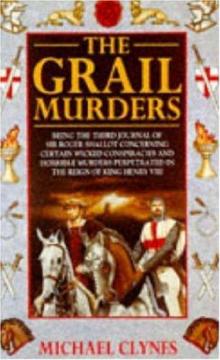 The Grail Murders
The Grail Murders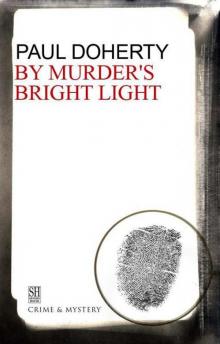 By Murder's Bright Light
By Murder's Bright Light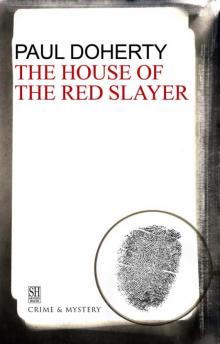 House of the Red Slayer
House of the Red Slayer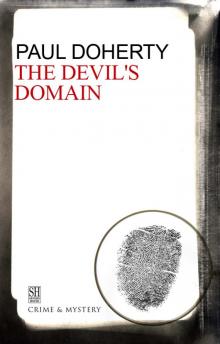 The Devil's Domain
The Devil's Domain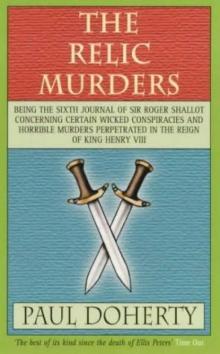 The Relic Murders srs-6
The Relic Murders srs-6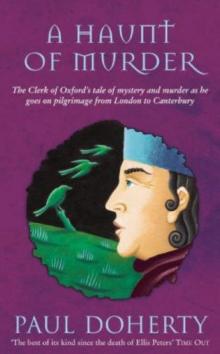 A haunt of murder ctomam-6
A haunt of murder ctomam-6 The Straw Men smoba-12
The Straw Men smoba-12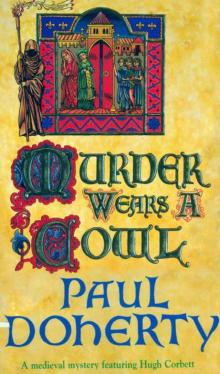 Hugh Corbett 06 - Murder Wears a Cowl
Hugh Corbett 06 - Murder Wears a Cowl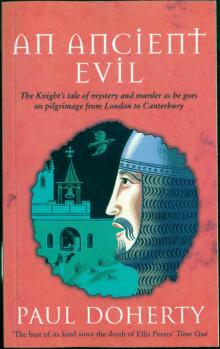 An Ancient Evil (Canterbury Tales Mysteries)
An Ancient Evil (Canterbury Tales Mysteries)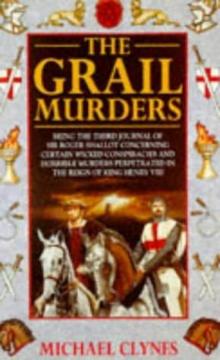 The Grail Murders srs-3
The Grail Murders srs-3 The Fate of Princes
The Fate of Princes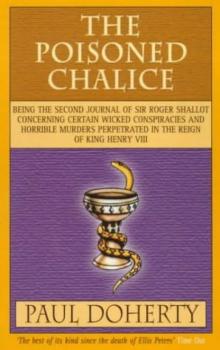 The poisoned chalice srs-2
The poisoned chalice srs-2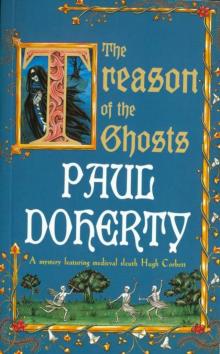 Hugh Corbett 12 - The Treason of the Ghosts
Hugh Corbett 12 - The Treason of the Ghosts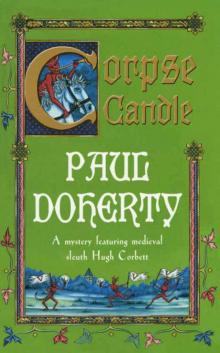 Hugh Corbett 13 - Corpse Candle
Hugh Corbett 13 - Corpse Candle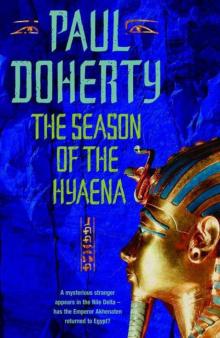 The Season of the Hyaena (Ancient Egyptian Mysteries)
The Season of the Hyaena (Ancient Egyptian Mysteries)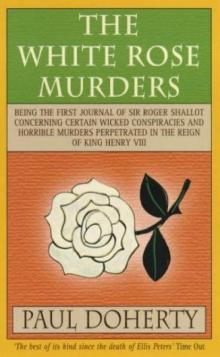 The White Rose murders srs-1
The White Rose murders srs-1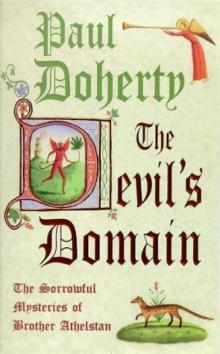 The Devil's domain smoba-8
The Devil's domain smoba-8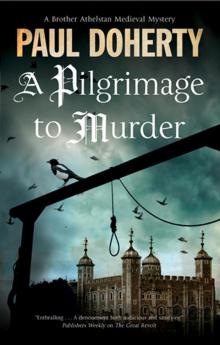 A Pilgrimage to Murder
A Pilgrimage to Murder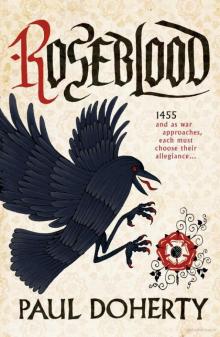 Roseblood
Roseblood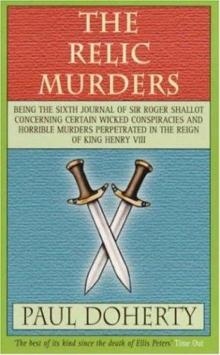 The Relic Murders
The Relic Murders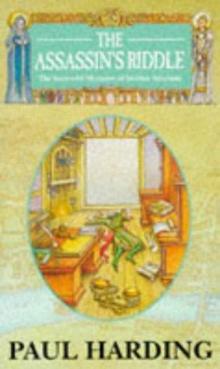 The Assassin's riddle smoba-7
The Assassin's riddle smoba-7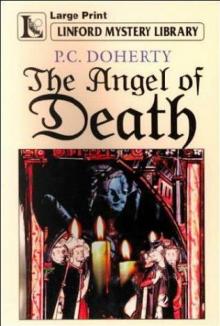 Angel of Death hc-4
Angel of Death hc-4 Dark Queen Rising
Dark Queen Rising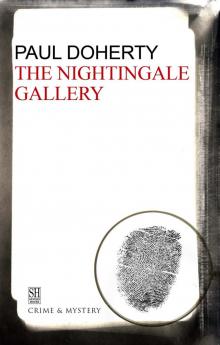 The Nightingale Gallery
The Nightingale Gallery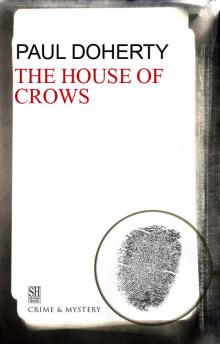 The House of Crows
The House of Crows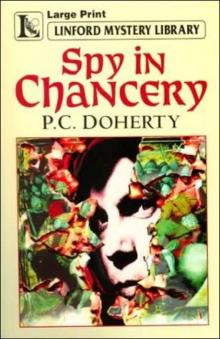 Spy in Chancery hc-3
Spy in Chancery hc-3